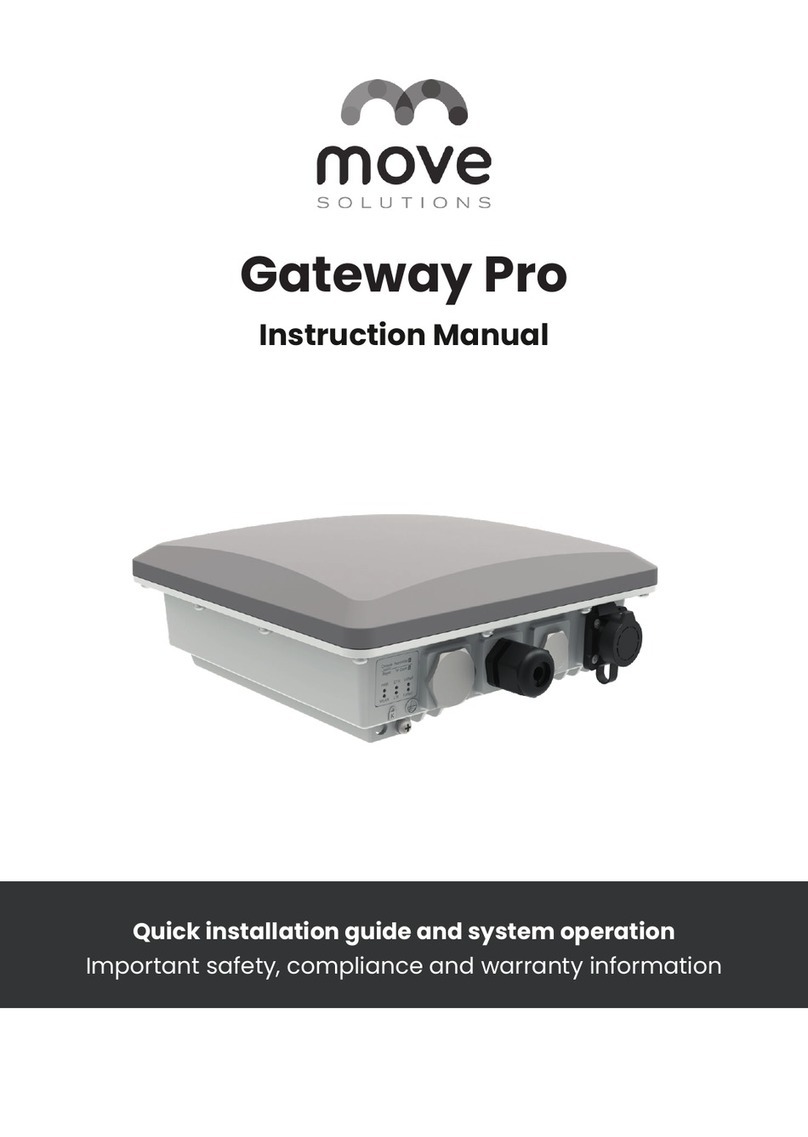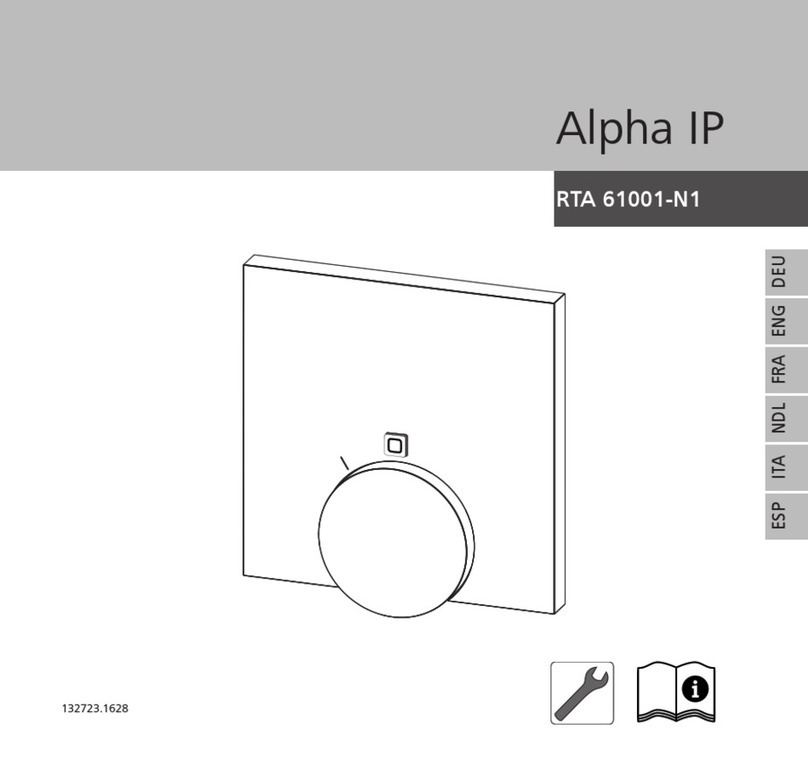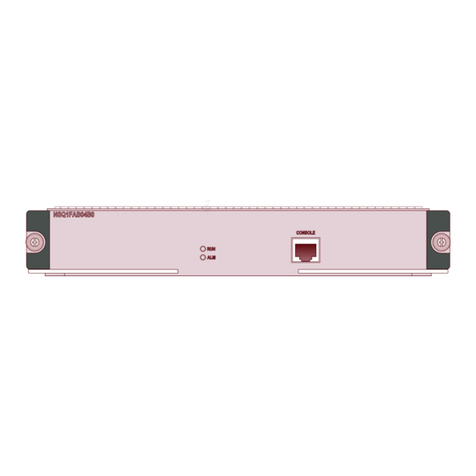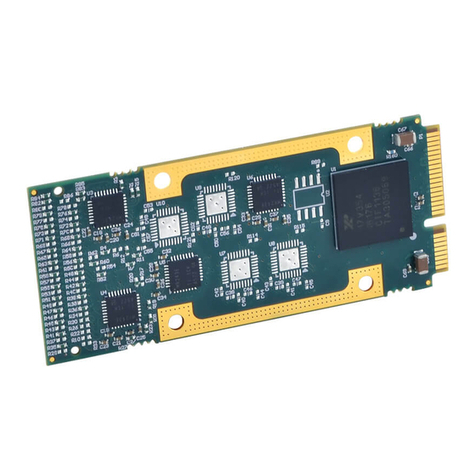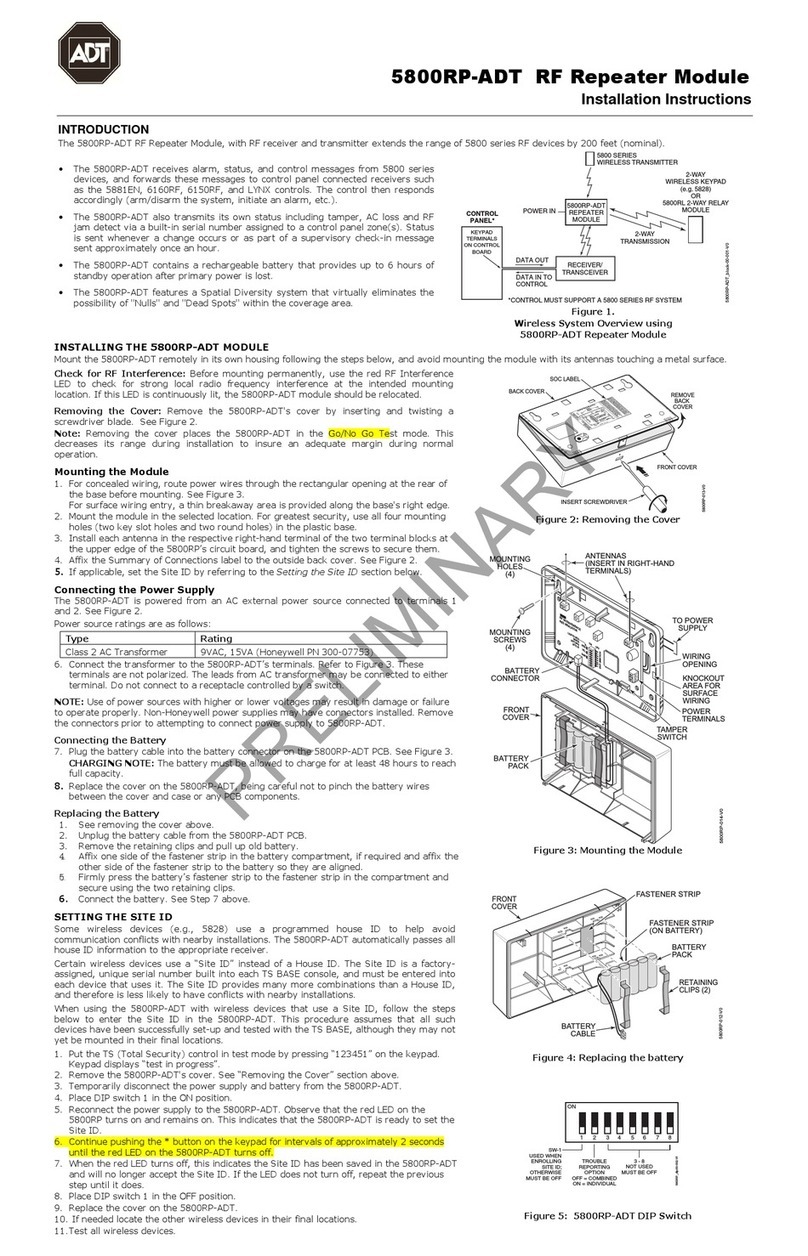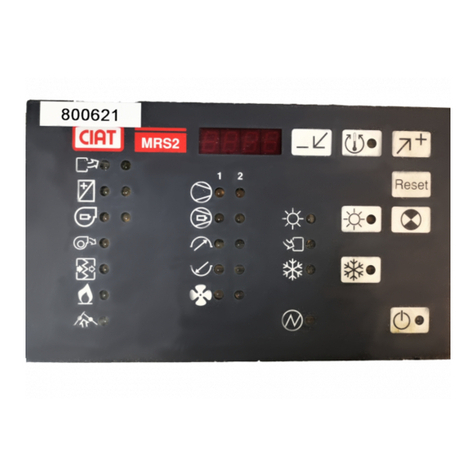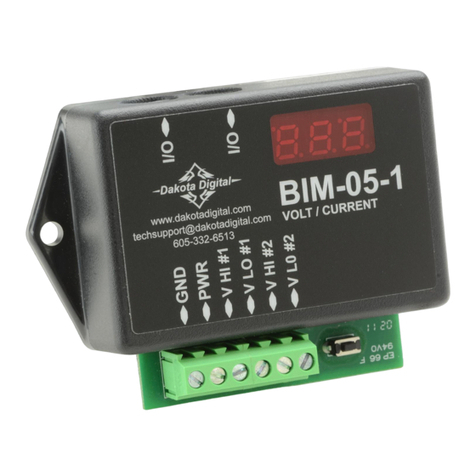Move MAMWLE Series User manual


1. Features
2. General description
3. Part number
4. Block diagram
5. Pin-out
6. Max rating and external caratheristic
7. How to program / debug the MAMWLExx
8. Reference circuit
9. Recommended footprint
4
5
6
6
7
17
20
22
23
Index:
Move S.r.l.
Piazza Cavour 7, 20121 Milano - Italia
Via Guglielmo Lippi Francesconi 1256/J, 55100 Lucca - Italia
P.IVA: 09887990969
MOVE-X CUSTOMER ASSISTANCE SERVICE
Visit the website at www.movesolutions.it for contact information relating to
the addresses and telephone numbers of the oces.

Pag | 5
MAMWLExx - Move-X
1. FEATURES:
CORE: STM32WL
• Multiprotocol LPWAN 32-bit Arm®Cortex®-M4 MCUs, LoRa®, (G)FSK, (G)MSK, BPSK
• 128KB -256KB Flash, 48KB - 64KB SRAM
• Rich peripherals: ADC, DAC, DMA, Comparators, Timers, independent watchdog
& many others
• Ultra-low power features
INTERFACES: 2xSPI, 3xI2C, 2xUSART, 1x LPUART, 1xJTAG, 1xSWDIO
SIZE: 16.5mm X 15.5mm X 2mm
CLOCK: 32MHz TCXO, 32.768KHz XTAL
TX POWER: low power path (up to +14 dBm) high power path (up to +22 dBm).
RF OUTPUT: Two assembly variants:
• 50 Ohm u.FL connector
• 50 Ohm pin
Low Power Radio Module with M4/M0+Core.
MAMWLExx

Pag | 7Pag | 6 MAMWLExx - Move-X MAMWLExx - Move-X
2. GENERAL DESCRIPTION:
Applications:
• Smart meters,
• Supply chain,
• Building automation,
• Agricultural automation,
• Drone Control,
• GPS RTK,
• Smart cities,
• Retail Store sensors,
• Assets Tracking,
• Street Lights,
• Parking Sensors,
• Environmental Sensors,
• Healthcare Sensors,
• Remote control applications.
3. PART NUMBER:
4. BLOCK DIAGRAM:
RF Output Part number
u.FL connector MAMWLE-00
Pin 44 MAMWLE-01
Matching Network High Power Tx Path
MN HP
Matching Network Low Power Tx path
MN LP
Matching Network Rx path
MN IN
TCXO
MN HP U.FL
PIN
MN LP
MN IN
POWER
SECTION
XTAL
STM32WL
HPLP
RF
SWITCH
IN
MAMWLExx is a new low power radio module with a high-performance processing unit for
the most complex task and high demanding applications.
The module comes with a great size of RAM and FLASH Memory which can be used for
important computing calculations and to embed the biggest software applications. It
even comes with a 64-bit unique identifier (DevEUI) in it, necessary to be compliant with
LoRaWAN standard. Since the module is based on STM SoC, it can be programmed using
ST environment itself, like STM32 CubeIde and STMCubeMX.
MAMWLExx module is designed to be easily integrated into any PCB offering two assembly
variants. One with a U.FL coaxial connector on the top of the package that can be directly
plugged into the antenna through a pigtail, saving space on the mainboard. The other
variants, that outputs the RF signal on a 50 Ohm pin,
fits you if you wish to create your own antenna design.
The module uses a high-performance ARM Cortex M4 32 Bits RISC core operating at 48
Mhz. The MAMWLExx has different types of low-power operation states, perfect for diffe-
rent applications especially the ones that need power saving.
MAMWLExx implements multiples radio modulations: LoRa, (G)FSK, (G)MSK, and BPSK with
different options (Bandwidth, SF, Powers, CR) to meet different needs of communication.
The module includes a 32MHz TCXO to drive the RF subsystem, and it is capable to output
up to +22dbm. MAMWLExx comes with a rich pin-out to meet different needs. Pin-out is
designed to use different peripherals at the same time using different protocols like I2C,
SPI, LPUART, USART. The module has 12 multiplexed pins for a 12 bit (up to 16 bits) SAR ADC
with DMA support, 12 bits DAC, 2 ultra-low-power comparator, multiple timers, and in-
dependent watchdog, JTAG and SWDIO debug capabilities. MAMWLExx has up to 32 I/O,
most of them 5V-tolerant. The module implements a hardware encryption/decryption
accelerator for different types of standards as AES (both 128 - 256 bits) and PKA for RSA,
Diffie-Hellmann, or ECC (Elliptic Curve Cryptography) over GF(p) (Galois fields).

Pag | 9Pag | 8 MAMWLExx - Move-X MAMWLExx - Move-X
PROGRAMMING
PROGRAMMING
PROGRAMMING
PROGRAMMING
PROGRAMMING
PROGRAMMING
PROGRAMMING
PROGRAMMING
PROGRAMMING
PROGRAMMING
PROGRAMMING
PROGRAMMING
Main System Peripherals and GPIO
5. PIN - OUT
The size of MAMWLExx is about of 16,5 mm X 15,5 mm LGA and comes with a 66 pin out to
bring all the functionality and rich peripherals of the STM32WLEx.
It has multiples interfaces availables:
PROGRAMMING
PROGRAMMING
PROGRAMMING
PROGRAMMING
PROGRAMMING
PROGRAMMING
PROGRAMMING
PROGRAMMING
PROGRAMMING
PROGRAMMING
PROGRAMMING
PROGRAMMING
Pin-out: USART1/USART2

Pag | 11Pag | 10 MAMWLExx - Move-X MAMWLExx - Move-X
Pin-out: SPI1/SPI2 Pin-out: I2C1/I2C2/I2C3

Pag | 13Pag | 12 MAMWLExx - Move-X MAMWLExx - Move-X
Port
AF0 AF1 AF2 AF3 AF4 AF5 AF6 AF7
SYS_
AF TIM1/
TIM2/
LPTIM1
TIM1/
TIM2
SPI2S2
TIM1/
LPTIM3
I2C1/
I2C2/
I2C3
SPI1/
SPI2S2 -USART1/
USART2
PA0 - TIM2_
CH1 - - I2C3_
SMBA
I2S_
CKIN -USART2_
CTS
PA1 - TIM2_
CH2 -LPTIM3_
OUT
I2C1_
SMBA
SPI1_
SCK -USART2_
RTS
PA2 LSCO TIM2_
CH3 - - - - - USART2_TX
PA3 - TIM2_
CH4 - - - I2S2_
MCK - USART2_RX
PA4 RTC_
OUT2
LPTIM1_
OUT - - - SPI1_
NSS - USART2_CK
PA5 - TIM2_
CH1
TIM2_
ETR
SPI2_
MISO -SPI1_
SCK - -
PA6 - TIM1_
BKIN - - I2C2_
SMBA
SPI1_
MISO - -
PA7 - TIM1_
CH1N - - I2C3_
SCL
SPI1_
MOSI - -
PA8 MCO TIM1_CH1 - - -
SPI2_
SCK/
I2S2_
Ck
- USART1_CK
PA9 - TIM1_
CH2 -
SPI2_
NSS/
I2S2_WS
I2C1_
SCL
SPI2_
SCK/
I2S2_
Ck
- USART1_TX
PA10 TIM1_
CH3
TIM1_
CH3 - - I2C1_
SDA
SPI2_
MOSI/
I2S2_
SD
- USART1_RX
PA11 TIM1_
CH4
TIM1_
CH4
TIM1_
BKIN2
LPTIM3_
ETR
I2C2_
SDA
SPI1_
MISO - USART1_CTS
Port A
Port
AF8 AF9 AF10 AF11 AF12 AF13 AF14 AF15
LPUART1 - - -
COMP1/
COMP2/
TIM1
-
TIM2/
TIM16/
TIM17/
LPTIM2
EVENOUT
PA0 - - - - COMP1_
OUT - TIM2_ETR CM4_
EVENTOUT
PA1 LPUART1_
RTS - - - - - - CM4_
EVENTOUT
PA2 LPUART1_
TX - - - COMP2_
OUT - - CM4_
EVENTOUT
PA3 LPUART1_
RX - - - - - - CM4_
EVENTOUT
PA4 - - - - - - LPTIM2_
OUT
CM4_
EVENTOUT
PA5 - - - - - - LPTIM2_
ETR
CM4_
EVENTOUT
PA6 LPUART1_
CTS - - - TIM1_
BKIN -TIM16_
CH1
CM4_
EVENTOUT
PA7 - - - - COMP2_
OUT -TIM17_CH1 CM4_
EVENTOUT
PA8 - - - - - - LPTIM2_
OUT
CM4_
EVENTOUT
PA9 - - - - - - - CM4_
EVENTOUT
PA10 - - - - - - TIM17_
BKIN
CM4_
EVENTOUT
PA11 - - - - TIM1_
BKIN2 - - CM4_
EVENTOUT
Port A

Pag | 15Pag | 14 MAMWLExx - Move-X MAMWLExx - Move-X
Port
AF0 AF1 AF2 AF3 AF4 AF5 AF6 AF7
SYS_
AF TIM1/
TIM2/
LPTIM1
TIM1/
TIM2
SPI2S2
TIM1/
LPTIM3
I2C1/
I2C2/
I2C3
SPI1/
SPI2S2 -USART1/
USART2
PA12 - TIM1_
ETR -LPTIM3_
IN
I2C2_
SCL
SPI1_
MOSI -USART1_
RST
PA13 JTMS-
SWDIO - - - I2C2_
SMBA - - -
PA14 JTCK-
SWCLK
LPTIM1_
OUT - - I2C1_
SMBA - - -
PA15 JTDI TIM2_
CH1
TIM2_
ETR -I2C1_
SDA
SPI1_
NSS - -
PB0 VDD_TCXO1
PB1 - - - - - - - -
PB2 - LPTIM1_
OUT - - I2C3_
SMBA
SPI1_
NSS - -
PB3
JTDO-
TRACE
SWO
TIM2_
CH2 - - - SPI1_
SCK -USART1_
RTS
PB4 NJTRST - - - I2C3_
SDA
SPI1_
MISO -USART1_
CTS
PB5 - LPTIM1_
IN1 - - I2C1_
SMBA
SPI1_
MOSI -USART1_
CK
PB6 - TIM1_
ETR - - I2C1_
SCL - - USART1_
TX
PB7 - TIM1_
IN2 -TIM1_
BKIN
I2C1_
SDA - - USART1_
RX
PB8 - TIM1_
CH2N - - I2C1_
SCL - - -
PB9 - TIM2_
CH3N - - I2C1_
SDA - - -
Port B Port A (continued)
1. Internally connected. Not available as output Pin.
Port B Port A (continued)
Port
AF8 AF9 AF10 AF11 AF12 AF13 AF14 AF15
LPUART1 - - -
COMP1/
COMP2/
TIM1
-
TIM2/
TIM16/
TIM17/
LPTIM2
EVENOUT
PA12 - - - - - - - CM4_
EVENTOUT
PA13 IR_
OUT - - - - - - CM4_
EVENTOUT
PA14 - - - - - - - CM4_
EVENTOUT
PA15 - - - - - - - CM4_
EVENTOUT
PB0 VDD_TCXO1
PB1 LPUART_1
RTS_DE - - - - - LPTIM2_
IN1
CM4_
EVENTOUT
PB2 - - - - - - - CM4_
EVENTOUT
PB3 - - - - - - - CM4_
EVENTOUT
P4 - - - - - - TIM17_
BKIN
CM4_
EVENTOUT
PB5 - - - - - - TIM16_
BKIN
CM4_
EVENTOUT
PB6 - - - - - - TIM16_
CH1N
CM4_
EVENTOUT
PB7 - - - - - - TIM17_
CH1N
CM4_
EVENTOUT
PB8 - - - - - - TIM16_
CH1
CM4_
EVENTOUT
PB9 IR_
OUT - - - - - TIM17_
CH1
CM4_
EVENTOUT
1. Internally connected. Not available as output Pin.

Pag | 17Pag | 16 MAMWLExx - Move-X MAMWLExx - Move-X
Port
AF0 AF1 AF2 AF3 AF4 AF5 AF6 AF7
SYS_AF TIM1/
TIM2/
LPTIM1
TIM1/
TIM2
SPI2S2
TIM1/
LPTIM3
I2C1/
I2C2/
I2C3
SPI1/
SPI2S2 -USART1/
USART2
PB10 - TIM2_
CH3 - - I2C1_
SCL - - -
PB11 - TIM2_
CH4 - - I2C3_
SDA - - -
PA12 - TIM1_
BKIN -TIM1_
BKIN
I2C1_
SMBA
SPI2_
NSS/
I2S2_WS
- -
PA13 - TIM2_
CH1N - - I2C1_
SCL
SPI2_
SCK/
I2S2_CK
- -
PB14 - TIM2_
CH2N -I2S2_
MCK
I2C1_
SDA
SPI2_
MISO - -
PB15 - TIM2_
CH2N - - I2C2_
SCL
SPI2_
MOSI/
I2S2_SD
- -
Port B (continued)
Port
AF8 AF9 AF10 AF11 AF12 AF13 AF14 AF5
LPUART1 - - -
COMP1/
COMP2/
TIM1
-
TIM2/
TIM16/
TIM17/
LPTIM2
EVENOUT
PB10 LPUART1_
RX - - - COMP1_
OUT - - CM4_
EVENTOUT
PB11 LPUART1_
TX - - - COMP2_
OUT - - CM4_
EVENTOUT
PA12 LPUART1_
RTS - - - - - - CM4_
EVENTOUT
PA13 LPUART1_
CTS - - - - - - CM4_
EVENTOUT
PB14 - - - - - - - CM4_
EVENTOUT
PB15 - - - - - - - CM4_
EVENTOUT
Port B (continued)

Pag | 19Pag | 18 MAMWLExx - Move-X MAMWLExx - Move-X
Port
AF0 AF1 AF2 AF3 AF4 AF5 AF6 AF7
SYS_
AF TIM1/
TIM2/
LPTIM1
TIM1/
TIM2
SPI2S2
TIM1/
LPTIM3
I2C1/
I2C2/
I2C3
SPI1/
SPI2S2 -USART1/
USART2
PC0 - LPTIM1_
IN1 - - I2C3_
SCL
SPI1_
MOSI - -
PC1 - LPTIM1_
OUT -
SPI2_
MOSI/
I2S2_SD
I2C3_
SDA - - -
PC2 - LPTIM1_
IN2 - - - - - -
PC3 FECNTRL31
PC4 FECNTRL11
PC5 FECNTRL21
PC6 - - - - I2S2_
MCK
SPI1_
NSS - -
PC13
RTC_
OUT1,
RTC_
TS
- - - - SPI1_
SCK - -
PH3 - - - - - - - -
Port C
1. Internally connected. Not available as output Pin.
Port
AF8 AF9 AF10 AF11 AF12 AF13 AF14 AF15
LPUART1
- - -
COMP1/
COMP2/
TIM1
-
TIM2/
TIM16/
TIM17/
LPTIM2
EVENOUT
PC0 LPUART1_
RX - - - - - LPTIM2_
IN1
CM4_
EVENTOUT
PC1 LPUART_
TX - - - - - - CM4_
EVENTOUT
PC2 - - - - - - - CM4_
EVENTOUT
PC3 FECNTRL31
PC4 FECNTRL11
PC5 FECNTRL21
PC6 - - - - - - - CM4_
EVENTOUT
PC13 - - - - - - - CM4_
EVENTOUT
PH3 - - - - - - - CM4_
EVENTOUT
Port C
1. Internally connected. Not available as output Pin.

Pag | 21Pag | 20 MAMWLExx - Move-X MAMWLExx - Move-X
System Peripheral
2x DMA controllers
Timers and Low Power Timer
RTC with 32-bit sub-second-wakeup counter
Independent watchdog, Window watchdog
Hardware Encryption/Decryption accelerator
Task Quantity (Pin out)
Digital Pin up to 36 pins
ADC 12 pins
VREF+ 1 pin
Comparators 2 pins
DAC 1 pin
GPIO can have different operations states for output and input operation as:
1) Output States: Push-Pull or Open drain + pull-up/down
2) Input States: Floating, pull-up/down, analog
Most of pins are 5V tolerant.
The module has also different system peripheral to achieve great performances such as:
With a number of 36 I/O that includes:
Interface Quantity
I2C 3
SPI 2
U(S)ART 2
LPUART 1
Parameter Minimum Typical Maximum
Temperature -40 +85 °C
Supply Voltage (VDD) 3,0 3,3 3,6 V
Supply Voltage (VREF+) 2,0 - VDD V
Frequency Band 868 915 Mhz
TCXO 32 Mhz
XTAL 32,768 Khz
Power consumption1 -2
(shutdown mode) 31 150 nA
Power consumption1 -2
(standby mode) 0,255 0,710 uA
Power consuption1 -2
(Stop 2) 0,885 2,60 uA
Power consuption1 -2
(Stop 1) 4,20 20 uA
Power consuption1 -2
(Stop 0) 400 570 uA
Power consumption1 -2
(Sleep mode 48 Mhz) 1,70 2,10 mA
Power consumption1 -2
(Run mode 48 Mhz) 5,55 7,40 mA
6. MAX RATING AND EXTERNAL CHARACTERISTICS
Operating Characteristics
1. The effettive power consumption depends on: temperature; supply voltage; clock settings.
2. Given consuptions are for VDD = 3V; T = +25°C.

Pag | 23Pag | 22 MAMWLExx - Move-X MAMWLExx - Move-X
Parameter Minimum Typical Maximum
Output RF level (Low PA) +14 dBm
Output RF level (High PA) +22 dBm
Power consumption (PA=+10dBm)115 20 mA
Power consumption (PA=+14dBm)126 mA
Power consumption (PA=+20dBm)187 106 mA
Power consumption (PA=+22dBm)1120 mA
Sensitivity (868Mhz, BW=125Khz SF=12) -135,4 dBm
Sensitivity (868Mhz, BW=125Khz SF=7) -124,2 dBm
Sensitivity (868Mhz, BW=500Khz SF=12) -129,6 dBm
Sensitivity (868Mhz, BW=500Khz SF=7) -116,2 dBm
Sensitivity (915Mhz, BW=125Khz SF=12) -135,6 dBm
Sensitivity (915Mhz, BW=125Khz SF=7) -122,4 dBm
Sensitivity (915Mhz, BW=500Khz SF=12) -127,9 dBm
Sensitivity (915Mhz, BW=500Khz SF=7) -115,1 dBm
RF Characteristics
Parameter Minimum Typical Maximum
Temperature -40 +85 °C
Supply Voltage (VDD) -0,3 3,6 V
Supply Voltage (VREF+) -0,3 3,6 V
Absolute Characteristics
1. VDD = 3,3 V
The Sub-Ghz Radio is a low power radio with a high quality matching filter for operate in
the band of 868 Mhz and 915 Mhz. It can use different modulation techniques such as:
The radio is compliant for LoRaWAN specification and for different radio regulations ETSI
EN 300 220, EN 300 113, EN 301 166, FCC CFR 47 part 15, 24, 90, 101 and the ARIB STD-T30, T-67,
T-108.
The Sub-Ghz Radio is equipped with two high performance power amplifier to transmit
up to +22dBm and power can be programmed with a step of 1 dB within 32 steps. A high
quality TCXO 32 Mhz guarantees great stability during transmission.
LoRa modulation can operate with different bandwidth:
And with different Spreading Factors (from 5 to 12).
It can be set in multiple differents mode of operations for LoRa Packet (Explicit/Implicit
Header Mode) choosing also different coding rates:
Radio
Modulation Mode
LoRa TX/RX
(G)FSK TX/RX
(G)MSK TX/RX
(D)BPSK Only TX
0 1 2 3 4 5 6 7 8 9 Code
7,81 10,42 15,63 20,83 31,25 41,67 62,5 125 250 500 BW[KHZ]
0 1 2 3 4 CR Settings
4/4 4/5 4/6 4/7 4/8 Coding Rate
The radio is completely programmable to achieve the best performances needs for dif-
ferent kind of application.
MAMWLExx comes with two different option:
1) 50 Ohm u.FL connector
2) 50 Ohm RF pin

Pag | 25Pag | 24 MAMWLExx - Move-X MAMWLExx - Move-X
7. HOW TO PROGRAM & DEBUG THE MAMWLEXX
HOW TO DEVELOP WITH MAMWLEXX
The MAMWLExx is compatible with all the software development environment that works
for the STM32 microcontroller series (e.g. STM32CubeIDE, Keil uVision, IAR Embedded).
The RF switch that selects the Tx/Rx path of the module is controlled by the STM32WL by
three GPIOs. Those GPIOs (PC3, PC4, PC5) aren’t output in the MAMWLExx footprint, but must
be driven in the firmware to use the RF part as desired (see tab). Same thing applies to pin
PB0 of the STM32WL that is connected (internally to the module) at the TCXO alimentation.
TCXO must be ON when using the RF part and can be OFF the rest of the time reducing the
overall consumption.
ThischoiceofcontrolpinsfortheRFswitchandtheTCXOisthesameasSTMicroelectronics.
In this way the user can run without further modification the code examples that comes
within the firmware packages released by ST for the STM32WL series.
Those example in the firmware packages are also the best way to start a new project with
the MAMWLExx.
HOW TO PROGRAM & DEBUG
There are many way to program and debug the MAMWLExx. The MAMWLExx comes with an
internal bootloader that support boot from SPI and USART, in addition the module can also
be programmed and debugged via the JTAG/SWD interface.
The best way to access those interfaces for programming is through the ST-LINK V3
debugger/programmer for STM32 micro series. The ST-link act like a bridge between the
board and the PC. It communicates with the PC via a microB-USB cable and has many
headers for connecting with various subsets of the SPI/USART/JTAG/SWD intefaces of the
module. If you would like to program using SPI or USART see AN2606 from ST first because
there are some details that you must pay attention of. For example if you would like to
RF front-end conguration PC4 PC5 PC3
TX high output power Low High High
TX low output power High High High
RX High Low High
Power -down Low Low Low
The u.FL connector is already applied on the top of the module with a high performance
Pi Filter, so there is no need to design any RF circuit to implement the module. To give the
best flexibility to the designer MAMWLExx implements a 50 Ohm pin antenna to enhance
a complete custom antenna design.
The module can implement Over-The-Air Firmware updates.
USING HEADER CN1 OF ST-LINK:
CN1 support the SWD/JTAG interface for programming and debugging the application
and provides a virtual com port (COM or VCP) that make simple printing string in a serial
terminal. To be able to connect the board to CN1, the board should have a twin header of
CN1 connected to the module like shown in the figure. While programming through CN1 is
not necessary to connect BOOT0 to VCC.
STM32 CUBE IDE,
KEIL,
OTHER...
MAMWLE
BOARD
ST-LINK
USB FLAT RIBBON
(comes with ST-LINK)
boot from USART1 only pin PA9, PA10 (and not on all pins that support USART1) are fine.
Among all the possible ST-link V3 headers, below we indicate an easy way of connection
that suits either programming and debugging. For further information on other ST-link
possibility please see the UM2448 user manual from ST.

Pag | 27Pag | 26 MAMWLExx - Move-X MAMWLExx - Move-X
8. REFERENCE SCHEMATIC
9. RECOMMENDED FOOTPRINT
1
14
57 60
64
53
15 26
Botton view Right view Top view
27
40
4152
SIZE AND DIMENSIONS
Ø 0.50

Move S.r.l.
Piazza Cavour 7, 20121 Milano - Italia
Via Guglielmo Lippi Francesconi 1256/J, 55100 Lucca - Italia
P.IVA: 09887990969
www.movesolutions.it
Table of contents
Other Move Control Unit manuals
Popular Control Unit manuals by other brands

Huawei
Huawei UPS5000-E Series quick guide

cashco
cashco 987 Installation, operation and maintenance manual
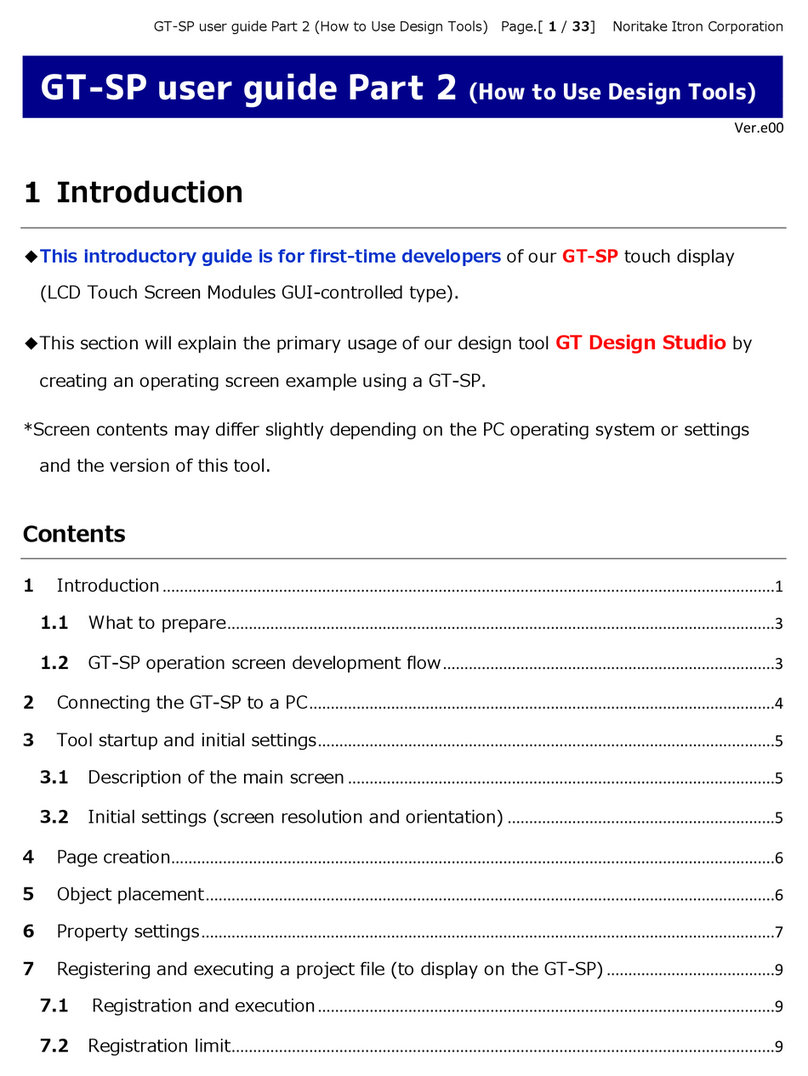
Noritake
Noritake GT-SP Series user guide
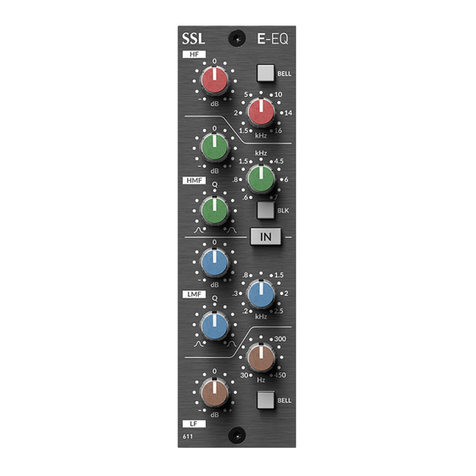
Solid State Logic
Solid State Logic E Series user guide
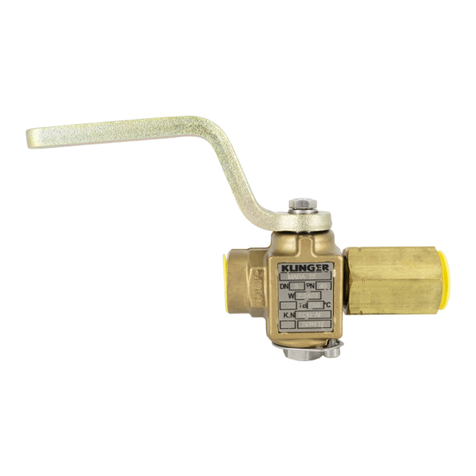
KLINGER
KLINGER MABA Standard Operation Manual
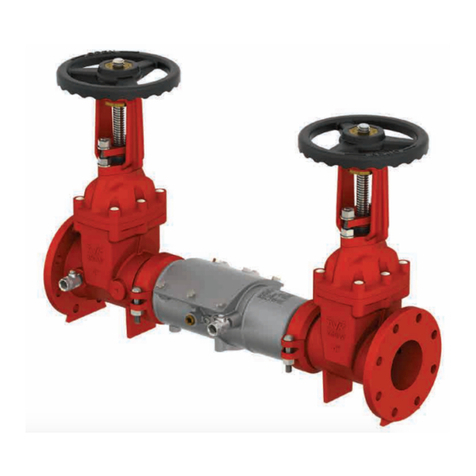
Watts
Watts AMES Deringer 20G Installation, operation and maintenance manual

